Family: Marriage
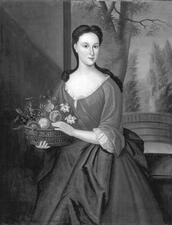
Colonial Period in the United States
Jewish women in colonial America led varied lives, with some occupying traditional roles as mothers and wives and others remaining single. Some ran their own businesses and others worked as servants for Jews with more money. Both in and out of the synagogue, women played a crucial role in early American Jewish communities.
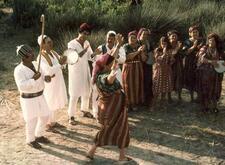
Community Dance Practices in the Yishuv and Israel: 1900-2000

Concubine of a Levite: Bible

Concubine of a Levite: Midrash and Aggadah
The story of the concubine at Gibeah, who is murdered when her husband sends her out to a crowd of Benjamites, is one of the most shocking narratives in the Bible. The rabbis do not blame the unnamed woman for her fate and the ensuing crisis, instead placing the blame at the feet of the Levite and the leaders of Israel.
Contraception
One of the major Jewish sources dealing with contraception is Tosefta Niddah. As with the issue of abortion, the more public the debate about contraception became over time, the more some rabbinic authorities attempted to usurp women’s control over their bodies.
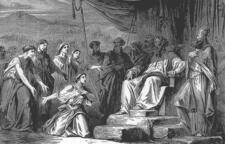
Daughters of Zelophehad: Bible
The story of the five daughters of Zelophehad provides legitimation of a limited right of Israelite women to inherit land. The story celebrates women’s boldness and at the same time offers comfort for men who have the misfortune (from the Bible’s androcentric point of view) to have no sons.
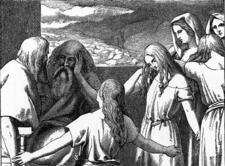
Daughters of Zelophehad: Midrash and Aggadah
The midrash rains many praises on the daughters of Zelophehad, describing them all as equally wise and virtuous, as well as exegetes. The midrash also says that they are mentioned by the Patriarchs and are so righteous that they are blessed with children despite their old age.
Demography: Soviet Union, the Russian Federation and other Successor States
The statistics on Jewish marriage, divorce, fertility, emigration, and aging within the Soviet Union reveal new pockets of history and can shed light on the effects of historical events on Jewish lives.
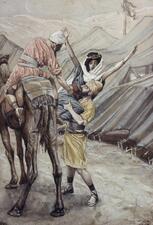
Dinah: Bible

Dinah: Midrash and Aggadah
Dinah was the only daughter of Jacob and Leah, and the Rabbis present her as possessing many positive qualities, as was fitting for the daughter of the progenitors of the Israelite nation. The rabbis also offer many different explanations for the rape of Dinah, trying to understand the troubling story.
Divorce: The Halakhic Perspective
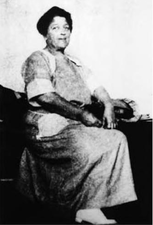
Josephine Sarah Marcus Earp
Impulsive, adventurous, and outspoken, Josephine Sarah Marcus Earp ran away from home when she was seventeen years old. Two years later, she joined destinies with western lawman, gambler, and entrepreneur Wyatt Earp. For forty-seven years, they roamed the West, mingling with well-known westerners on both sides of the law.
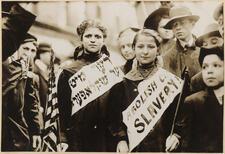
Eastern European Immigrants in the United States
Forty-four percent of the approximately two million Jewish immigrants who arrived in the United States between 1886 and 1914 were women. Although these women were more politically active and autonomous than other immigrant women, dire economic circumstances constricted their lives. The hopes these immigrant women harbored for themselves were often transferred to the younger generation.

Edna: Apocrypha
In the Book of Tobit, Edna is Raguel’s wife, Sarah’s mother, and the mother-in-law of Tobias, Tobit’s son. Edna has no biblical namesake; unlike the other women named in Tobit, her name does not evoke images from the Hebrew Bible. Perhaps the author of Tobit means to recall Eden’s idyllic existence, or, more likely, to convey by the name something about the type of woman, wife, and mother Edna is.

Elephantine
The documents found on the Egyptian island of Elephantine in the late nineteenth and early twentieth centuries, which date from the fifth century BCE, extensively feature women. The women enjoyed extensive financial and property rights and their narratives show a society in which women had significant rights, rare for the time.
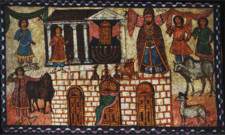
Elisheba, daughter of Amminadab: Midrash and Aggadah
Elisheba is mentioned only a single time in the Torah she-bi-khetav: Lit. "the written Torah." The Bible; the Pentateuch; Tanakh (the Pentateuch, Prophets and Hagiographia)Torah (Ex. 6:23), as the daughter of Amminadab, the sister of Nahshon and the wife of Aaron the High Priest. The Rabbis speak at large concerning her. They note her importance, since her life was bound up with the most distinguished families in Israel: her husband was appointed High Priest, her children were deputy high priests, her brother was nasi (chieftain) of the tribe of Judah and her brother-in-law Moses led the Israelites. The A type of non-halakhic literary activitiy of the Rabbis for interpreting non-legal material according to special principles of interpretation (hermeneutical rules).midrash accordingly applies to Elisheba the verse “And may your house be like the house of Perez whom Tamar bore to Judah” (Ruth 4:12), which was meant to signify that Elisheba, too, was descended from the royal line since she was from the tribe of Judah (Ruth Zuta 4:12). Commenting on Jacob’s blessing to Judah, “You, O Judah, your brothers shall praise” (Gen. 49:8), the Rabbis list Elisheba daughter of Amminadab among the important people and officials that were born to this tribe and call her “the mother of the priesthood” (Gen. Rabbah 97:8).
Equality, Religion and Gender in Israel
Although the principles of equality for women under the Declaration of Independence and the Women’s Equal Rights Law were not endowed with constitutional force, and the 1992 Basic Law: Human Dignity and Liberty does not expressly include the principle of equality, these laws have been interpreted by the courts as securing the principle of gender equality as a basic principle of the legal system.
Esau, Wives of: Midrash and Aggadah
Esau’s three wives are given more context and background by the rabbis than in the Torah. Esau’s first two wives, Adah and Judith, are described as adulterous and idolatrous, while his third wife, Mahalat, is interpreted as either Esau’s repentance or his fall further into evil.

Esther: Bible
Esther, the main character in the book named after her, is a young Jewish woman who becomes queen of the Persian empire and risks her life by interceding for the Jewish people to save them from a pogrom. Set in the Persian diaspora, the Book of Esther depicts the struggle for Jews to survive in the face of hostility in a foreign land.

Esther: Midrash and Aggadah
Queen Esther, the central character in the Biblical book named after her, is extensively and sympathetically portrayed in the Rabbinic sources. In their commentary on the Book of Esther, the Rabbis expand upon and add details to the Biblical narrative, relating to her lineage and history and to her relations with the other characters: Ahasuerus, Mordecai, and Haman.
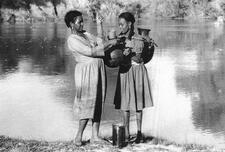
Ethiopian Jewish Women

Eve: Apocrypha

Eve: Midrash and Aggadah
Eve’s character is posited to be that of the original and quintessential woman. The Midrash interprets her traits as representative of the negative aspects of femininity. Eve’s punishment for her sin is also tied to the traditional ideas of the fundamentals of womanhood – childbirth, pregnancy, and male spousal domination.
Family During the Holocaust
Although Jewish family life was destroyed and restructured in many ways during the Holocaust, it still often provided strength and a sense of normalcy. In many cases women became the family’s main income earner and were charged with many new tasks and responsibilities. Families were also frequently broken up by deportation, escape abroad, and death.
Rabbi Moses Feinstein
Rabbi Moshe Feinstein, one of the great Jewish legalists of the twentieth century, wrote numerous legal decisions responding to and affecting women’s lives. His pronouncements regarding women aimed to respond to women’s issues with respect and careful consideration, while also establishing a system in which the roles of men and women were distinctly imbalanced.


